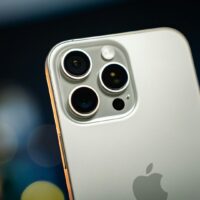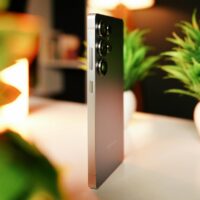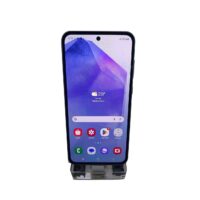The Samsung Galaxy A51 emerged as one of the most significant mid-range smartphones of its generation, bringing flagship-inspired features to an accessible price point. Launched in December 2019 as part of Samsung’s popular A-series lineup, this device quickly became a bestseller across global markets, offering consumers a compelling blend of modern design, capable performance, and Samsung’s renowned display technology. As a successor to the highly successful Galaxy A50, the A51 set out to refine the formula that made its predecessor popular while introducing new features that would appeal to budget-conscious smartphone enthusiasts.
For consumers navigating the crowded mid-range smartphone market, understanding what the Galaxy A51 delivers in terms of specifications, real-world performance, and long-term value becomes essential. This comprehensive review examines every aspect of the device, from its striking design and display quality to its quad-camera system, battery endurance, and overall performance capabilities. Whether you’re considering a purchase or simply curious about what made this device so popular, this analysis provides the detailed insights needed to make an informed decision.
Design and Build Quality: Modern Aesthetics with Practical Considerations
The Samsung Galaxy A51 represents a notable evolution in design philosophy for Samsung’s mid-range offerings. The device features what Samsung calls a “Glasstic” construction, combining polycarbonate materials with a glass-inspired finish that creates a premium appearance while maintaining durability and affordability. This design choice proves particularly practical, as plastic backs resist shattering far better than glass alternatives, though they do remain more susceptible to scratches over time. The phone measures precisely 158.5 millimeters by 73.6 millimeters by 7.9 millimeters, making it remarkably slim while maintaining a substantial feel in hand.
Weighing just 172 grams, the Galaxy A51 achieves an impressive balance between substantial build quality and comfortable handling. This lightweight characteristic distinguishes it from many contemporary smartphones that typically exceed 200 grams, making extended use sessions notably more comfortable. The device comes dressed in four attractive color options that Samsung marketed under the “Prism Crush” branding: Black, White, Blue, and Pink. Each variant features a distinctive geometric pattern on the rear panel that refracts light in rainbow-like effects, creating visual interest without being overly ostentatious.
The rear design showcases an L-shaped camera arrangement housed within a rectangular module that protrudes slightly from the body. This camera bump, while noticeable, creates minimal wobbling when the device rests on flat surfaces. The placement draws clear inspiration from flagship designs, particularly resembling arrangements seen on premium devices from various manufacturers during that period. Samsung includes a protective silicone case in the retail package, which proves invaluable for maintaining the glossy finish and preventing scratches on the polycarbonate surface.
Display Innovation and Front Design
The front of the Galaxy A51 features Samsung’s Infinity-O display design, representing a significant departure from the Infinity-U notch used on the previous A50 model. This circular punch-hole cutout, positioned centrally at the top of the screen, houses the front-facing camera while maximizing screen real estate. The bezels surrounding the display remain relatively thin, though noticeably thicker than those found on Samsung’s flagship S-series devices. The chin bezel at the bottom received particular attention from Samsung’s design team, becoming slimmer than its predecessor and contributing to a more modern, refined appearance.
Physical controls follow conventional smartphone arrangements, with volume rockers and the power button positioned on the right edge for easy thumb access. The power button serves dual functionality, acting as a Bixby activation trigger when pressed and held while the display remains active. The left edge houses the SIM card tray, which accommodates two nano-SIM cards plus a microSD card simultaneously, providing excellent flexibility for users requiring expanded storage or dual-SIM functionality. The bottom edge presents a USB Type-C port for charging and data transfer, a 3.5-millimeter headphone jack for traditional audio connectivity, and a single-firing speaker grille.
Display Technology: AMOLED Excellence in the Mid-Range
The Samsung Galaxy A51’s display stands as arguably its strongest feature, showcasing the technological advantage Samsung maintains in screen manufacturing. The device boasts a 6.5-inch Super AMOLED panel with Full HD+ resolution of 1080 by 2400 pixels, resulting in a pixel density of approximately 405 pixels per inch. This combination delivers exceptionally sharp visuals that remain crisp even when examined closely, making text reading and media consumption genuinely enjoyable experiences. The screen adheres to a modern 20:9 aspect ratio, providing an elongated canvas that proves particularly well-suited for scrolling through social media feeds, reading documents, and watching widescreen video content.
Color reproduction on the Super AMOLED panel exhibits the vibrant, saturated characteristics that Samsung displays have become renowned for delivering. The deep, true blacks inherent to OLED technology create stunning contrast ratios that make dark mode interfaces particularly striking and enhance the overall viewing experience when consuming multimedia content. This technology also enables the Always-On Display feature, allowing users to glance at time, date, and notification information without fully waking the device, thereby conserving battery life while maintaining convenient access to essential information.
Brightness performance proves adequate for most usage scenarios, with the display reaching 353 nits when manually adjusted and peaking at approximately 565 nits when Adaptive Brightness engages in direct sunlight conditions. While these figures fall short of the 800-plus nits achievable by premium flagship devices, they provide sufficient visibility for outdoor use under most lighting conditions. The screen protection comes courtesy of Corning Gorilla Glass 3, offering reasonable scratch resistance though not quite matching the protection levels provided by more recent Gorilla Glass iterations found on higher-end devices.
In-Display Fingerprint Sensor Performance
The Galaxy A51 incorporates an optical in-display fingerprint sensor, representing an upgrade from the Galaxy A50’s implementation. This biometric authentication method scans fingerprints through the display itself, eliminating the need for dedicated physical sensors and contributing to the phone’s clean aesthetic. User reports regarding the sensor’s performance prove somewhat mixed, with experiences varying considerably between individuals. When functioning optimally, the sensor provides quick authentication, though some users report inconsistencies in recognition accuracy and occasional slowdowns compared to traditional capacitive fingerprint sensors.
Samsung’s implementation shows improvement over the previous generation, with the A51’s sensor demonstrating better reliability when fingers are placed at various angles or positions. However, it still requires deliberate, centered placement for optimal recognition rates. The sensor performs adequately in most scenarios but lacks the speed and consistency of ultrasonic fingerprint sensors found in Samsung’s premium Galaxy S-series devices or the reliability of traditional physical sensors.
Performance and Processing Power: Understanding the Limitations
The Samsung Galaxy A51 relies on Samsung’s own Exynos 9611 chipset, an octa-core processor manufactured using a 10-nanometer process. This system-on-chip pairs with various RAM configurations depending on regional availability and specific model variants: 4 gigabytes, 6 gigabytes, or 8 gigabytes of LPDDR4X memory. Storage options include either 64 gigabytes or 128 gigabytes of internal capacity, expandable via microSD cards up to 1 terabyte, providing ample space for applications, photos, videos, and other user content.
Performance characteristics reveal the Galaxy A51’s positioning as a device optimized for efficiency rather than raw power. The Exynos 9611 processor handles everyday tasks such as web browsing, social media scrolling, messaging applications, and video streaming with reasonable competence. Light multitasking scenarios generally proceed smoothly, though users pushing the device with numerous simultaneous applications may encounter occasional slowdowns or stuttering. The processor’s gaming capabilities prove adequate for casual titles and popular games running at moderate graphics settings, though demanding 3D games like PUBG Mobile or Fortnite reveal the chipset’s limitations when attempting to maintain higher frame rates at elevated quality presets.
Benchmark testing provides quantifiable evidence of the device’s performance positioning. In Geekbench assessments measuring CPU performance, the Galaxy A51 produces scores that place it firmly in the budget-to-mid-range category, trailing behind devices equipped with Qualcomm’s Snapdragon 700-series processors or more powerful alternatives. Graphics performance testing using 3DMark’s Sling Shot benchmark yields approximately 2,057 points, positioning the device between more budget-oriented options and true mid-range performers equipped with superior graphics processing capabilities.
Real-World Usage Experience
Multiple professional reviews consistently highlight that the Galaxy A51’s performance represents one of its more significant compromises. The device exhibits noticeable hesitation when launching applications, particularly heavier software packages. Interface animations occasionally stutter, and switching between applications doesn’t always proceed as smoothly as users might expect from devices in this price category. These performance limitations become particularly apparent when comparing the A51 against competitors offering Qualcomm Snapdragon processors, which typically deliver snappier, more responsive experiences at similar price points.
The camera application exemplifies these performance constraints, as it requires perceptible time to launch and become ready for capturing images. Switching between different camera modes or toggling between the standard and ultra-wide lenses involves noticeable delays that can prove frustrating when attempting to capture spontaneous moments. Some users also reported occasional camera application crashes during the device’s early software iterations, though firmware updates likely addressed many of these stability issues over the product’s lifecycle.
Camera System: Versatility with Variable Results
The Samsung Galaxy A51 features a quad-camera arrangement on its rear panel, representing a significant upgrade from the triple-camera setup found on the Galaxy A50. This configuration includes a 48-megapixel primary wide-angle camera with an f/2.0 aperture, a 12-megapixel ultra-wide camera with an f/2.2 aperture and 123-degree field of view, a 5-megapixel dedicated macro camera with an f/2.4 aperture, and a 5-megapixel depth sensor with an f/2.2 aperture specifically for portrait mode effects. The front-facing selfie camera employs a 32-megapixel sensor positioned within the Infinity-O punch-hole cutout.
The primary 48-megapixel camera doesn’t actually output images at full resolution during normal shooting. Instead, it employs pixel binning technology, combining four adjacent pixels into single “superpixels” to produce 12-megapixel images with enhanced light-gathering capabilities and improved detail in challenging lighting conditions. This approach proves common among mid-range smartphones utilizing high-resolution sensors, as it balances file size considerations with image quality improvements derived from computational photography techniques.
Daylight Photography Performance
In well-lit conditions with ample natural sunlight, the Galaxy A51’s main camera produces pleasing images characterized by good detail retention, accurate exposure, and Samsung’s characteristic vibrant color reproduction. The images exhibit what reviewers describe as the “modern-day Samsung look,” featuring pleasingly saturated colors that remain just shy of appearing excessive or unrealistic. Dynamic range proves adequate for most shooting scenarios, though extremely high-contrast scenes with deep shadows and bright highlights can challenge the camera’s capabilities, resulting in some loss of detail in extreme tonal ranges.
Image processing applies noticeable sharpening, particularly evident when examining grass, foliage, and other fine textures at full magnification. This processing approach creates images that appear crisp and detailed when viewed at normal sizes but can exhibit artificial-looking characteristics upon closer inspection. Noise levels remain well-controlled in good lighting, contributing to clean-looking images suitable for social media sharing and casual photography purposes.
Low-Light and Night Photography
Low-light performance represents one of the Galaxy A51’s more significant camera limitations. When ambient lighting decreases, image quality degrades noticeably, with increased noise levels, reduced sharpness, and somewhat desaturated colors compared to daylight captures. The main camera’s output becomes soft and noisy in dim conditions, while color reproduction loses the vibrancy characteristic of well-lit scenes. Dynamic range remains decent considering the challenging conditions, though deep shadows and bright point light sources tend toward clipping.
Samsung includes a dedicated Night Mode to address these low-light challenges. This computational photography feature captures multiple exposures and combines them to improve shadow detail, reduce noise, and enhance overall image brightness. While Night Mode delivers noticeable improvements over standard photo mode in dark conditions, it introduces a significant crop factor and reduces output resolution to 8 megapixels. The results show sharper details and better shadow definition, though color saturation doesn’t receive substantial enhancement. The ultra-wide camera benefits from Night Mode as well, with improved noise performance, though images remain somewhat softer than main camera captures.
Ultra-Wide and Macro Photography
The 12-megapixel ultra-wide camera provides genuinely useful versatility, allowing photographers to capture expansive scenes that simply wouldn’t fit within the main camera’s narrower field of view. Image quality from the ultra-wide lens proves respectable, with reasonably good detail retention in well-lit areas, though predictably more noise than the main camera and some distortion around frame edges, particularly noticeable with straight lines near image peripheries. Colors remain well-saturated without experiencing the desaturation sometimes seen with ultra-wide implementations on competing devices.
The dedicated 5-megapixel macro camera represents an interesting inclusion, offering superior capabilities compared to the 2-megapixel macro sensors commonly found on competing smartphones at similar price points. With its longer equivalent focal length of approximately 25 millimeters, the A51’s macro camera allows shooting from a more comfortable working distance of 3 to 5 centimeters rather than requiring users to position the phone extremely close to subjects. Image quality from the macro camera proves surprisingly capable when adequate lighting is available, though the fixed-focus nature demands precise distance maintenance to achieve sharp results. Steady hands and stationary subjects prove essential for optimal macro photography outcomes.
Video Recording and Selfie Performance
Video recording capabilities on the Galaxy A51 support resolutions up to 4K at 30 frames per second from both rear cameras and the front-facing selfie camera. Notably absent is support for 60-frames-per-second capture, a limitation imposed by the Sony IMX582 image sensor used in the main camera, despite the Exynos 9611 processor possessing sufficient encoding capabilities. The 4K video mode lacks stabilization entirely, making handheld footage appear shaky and generally unsuitable for casual shooting scenarios unless using a tripod or gimbal stabilizer.
The 1080p Full HD video mode includes electronic image stabilization for both the main and ultra-wide cameras, though performance varies between the two. Ultra-wide video footage appears very smooth and stable during walking or panning movements. The main camera, however, can exhibit focus hunting during movement, creating distracting visual artifacts that undermine the perception of stability. Samsung includes a Super Steady mode that crops into the ultra-wide camera’s field of view for enhanced stabilization, though testing revealed frame rate irregularities with footage captured at approximately 25.5 frames per second rather than a consistent 30 frames per second.
The 32-megapixel front-facing camera outputs selfies at 12 megapixels rather than the expected 8 megapixels that four-to-one pixel binning would typically produce. Despite this unusual resolution choice, selfie quality proves satisfactory with good detail retention, excellent dynamic range for a front-facing camera, and pleasant if slightly muted color reproduction. Portrait mode using the front camera demonstrates proficient subject detection with well-defined edges around clothing and accessories, though complex hairstyles can create unnatural transitions between in-focus subjects and blurred backgrounds.
Battery Life and Charging: Mixed Endurance Results
The Samsung Galaxy A51 incorporates a 4,000-milliampere-hour battery, matching the capacity found in its predecessor and representing a standard size for mid-range smartphones in this category. Combined with the efficiency-focused Exynos 9611 processor and the power-efficient Super AMOLED display, this battery capacity theoretically should deliver excellent endurance. However, real-world testing reveals somewhat inconsistent results that fall short of expectations given the battery size and efficiency-oriented hardware.
Comprehensive battery testing conducted by GSMArena yielded an overall Endurance rating of 86 hours, indicating that users engaging in one hour each of calling, web browsing, and video playback daily could expect the battery to last approximately 86 hours between charges. Specific component testing showed 13.5 hours of continuous web browsing over Wi-Fi, representing a full hour improvement over the Galaxy A50. However, video playback endurance dropped to 14 hours and 22 minutes, approximately 90 minutes less than its predecessor. Voice call time reached 22 hours, a respectable though not exceptional result for a 4,000-milliampere-hour battery.
PhoneArena’s battery testing methodology, which involves continuous web browsing at 150 nits of screen brightness, produced results showing the Galaxy A51 lasting 11 hours and 35 minutes, substantially above average for smartphones in general. YouTube video streaming tests revealed significantly different results between the A51 and its larger sibling, the A71, with the A51 managing 8 hours and 35 minutes of continuous playback compared to the A71’s exceptional 11 hours and 38 minutes. Gaming endurance testing using demanding 3D titles showed the A51 lasting 6 hours and 40 minutes, representing solid performance that exceeds casual gaming needs though falling well short of the A71’s remarkable 12 hours and 46 minutes.
Charging Speed and Capabilities
The Galaxy A51 supports Samsung’s Adaptive Fast Charging standard, which bases itself on Qualcomm Quick Charge 2.0 technology and maxes out at 15 watts. Samsung includes a compatible 15-watt charging adapter in the retail package, eliminating the need for separate charger purchases. However, charging speed proves somewhat disappointing given the battery capacity, with a complete charge from zero to 100 percent requiring approximately 90 minutes to two hours and 14 minutes depending on testing methodology. A 30-minute charging session from a completely depleted battery yields approximately 31 to 40 percent charge, which provides adequate emergency top-up capability but falls short of the rapid charging speeds offered by many competing devices.
The device lacks wireless charging support entirely, which may disappoint users who have invested in wireless charging accessories or who have come to appreciate the convenience of cable-free charging. This omission represents a clear cost-saving measure that helps Samsung maintain the device’s competitive pricing, though it does represent a feature gap compared to some premium mid-range alternatives and older flagship devices available at similar price points on the secondary market.
Software Experience: One UI and Update Support
The Samsung Galaxy A51 originally launched with Android 10 overlaid with Samsung’s One UI 2.0 interface. This software combination provided users with Samsung’s feature-rich, customization-heavy approach to Android, including numerous proprietary applications, system-wide theming capabilities, and interface refinements designed to improve usability on large-screen devices. One UI’s design philosophy emphasizes one-handed operation, with interactive elements positioned toward the bottom of screens where thumbs can more easily reach them, while informational content occupies upper screen areas.
Samsung committed to providing the Galaxy A51 with three generations of major Android updates and four years of security patches, announced in August 2020. This update commitment represented a significant improvement in Samsung’s software support policy for mid-range devices and demonstrated the company’s increasing focus on long-term device viability. As of May 2024, the Galaxy A51 had received its final major update to Android 13 with One UI 5.1, fulfilling Samsung’s three-generation update promise. However, on April 9, 2024, Samsung officially declared the Galaxy A51 series obsolete and ceased providing further support and updates for the device.
The software experience includes Samsung Knox security features providing enhanced system protection, though some users find the pre-installed applications and Samsung-specific services excessive. This “bloatware” can consume considerable storage space and potentially impact system performance, particularly on base models equipped with only 4 gigabytes of RAM. However, many pre-installed applications can be disabled or uninstalled to reclaim storage and reduce background resource consumption.
Connectivity and Additional Features
The Samsung Galaxy A51 provides comprehensive connectivity options appropriate for a mid-range device from its era. The phone supports 4G LTE networks across multiple bands, ensuring compatibility with carriers worldwide, though it notably lacks 5G capability. Wi-Fi connectivity supports 802.11 a/b/g/n/ac standards (Wi-Fi 5), delivering solid wireless performance for typical home and office network environments. Bluetooth 5.0 provides efficient wireless audio streaming and device pairing capabilities, while NFC support enables contactless payment systems and quick device pairing scenarios.
The USB Type-C port handles both charging and data transfer, representing the modern standard that enables reversible cable insertion and faster data transfer speeds compared to older micro-USB implementations. The continued inclusion of a 3.5-millimeter headphone jack proves particularly appreciated by users who prefer wired audio solutions, whether for latency-free gaming, high-quality music listening with traditional headphones, or simply avoiding the need to charge yet another Bluetooth accessory. Samsung even includes a basic pair of wired earbuds in the retail package, though sound quality from these bundled accessories remains predictably modest.
Audio playback through the single bottom-firing speaker delivers functional though unimpressive performance. The speaker lacks depth in lower frequencies and exhibits tinny characteristics that become particularly noticeable when consuming media content. While adequate for speakerphone calls, notification alerts, and occasional casual media viewing, the audio experience falls short of the stereo speaker configurations increasingly common on competing devices, even within the mid-range segment.
Conclusion: Evaluating the Galaxy A51’s Place in the Mid-Range Market
The Samsung Galaxy A51 represents a thoughtfully constructed mid-range smartphone that successfully delivers several flagship-inspired features at an accessible price point. Its standout attributes include an exceptional Super AMOLED display that rivals premium devices, an attractive modern design with distinctive styling, a versatile quad-camera system offering creative shooting options, and solid battery life that reliably powers through full-day usage scenarios. The device excels as a consumption-focused smartphone, providing an outstanding experience for streaming video content, browsing social media, reading articles, and engaging with visually-rich applications.
However, the Galaxy A51 cannot escape several compromises inherent to its market positioning. Performance limitations imposed by the Exynos 9611 chipset create noticeable slowdowns during demanding tasks, application launches, and intensive multitasking scenarios. The camera system, while versatile and capable in optimal lighting conditions, struggles with low-light photography and delivers inconsistent results that fall short of the imaging quality provided by competitors like the Google Pixel 3a at similar price points. Charging speed proves slower than expected, and the absence of wireless charging removes a convenience feature that some users have come to expect.
For prospective buyers, the Galaxy A51 makes the most sense when prioritizing display quality, Samsung’s software ecosystem, and design aesthetics over raw performance and camera excellence. It serves well as a reliable daily driver for users whose smartphone activities center on media consumption, social media engagement, light productivity tasks, and casual photography in good lighting conditions. However, mobile photography enthusiasts, power users running demanding applications, or individuals prioritizing absolute performance responsiveness might find better value in competing devices from manufacturers like Google, Xiaomi, Realme, or even Samsung’s own more powerful offerings.
The device’s official obsolescence as of April 2024, with Samsung ceasing all further updates and support, represents an important consideration for anyone evaluating used Galaxy A51 units in the secondary market. While the device remains functional and capable of meeting basic smartphone needs, the lack of ongoing security updates poses increasing risks over time, and the absence of new features from future Android versions means the user experience will remain static while competitors continue evolving their software offerings.
Ultimately, the Samsung Galaxy A51 achieved its goal of bringing Samsung’s design language, display technology, and brand appeal to a broader audience at mid-range pricing. Its commercial success, becoming one of the best-selling Android smartphones during its active market period, validates Samsung’s product strategy and demonstrates consumer willingness to accept reasonable compromises in exchange for specific strengths like display quality and brand reputation. For those who purchased the device during its prime availability window, it likely provided satisfactory service throughout its supported lifecycle, though today’s prospective buyers would benefit from exploring more recent alternatives offering improved performance, better cameras, and ongoing software support.













